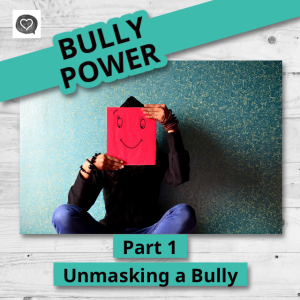How long has bullying been around?
The act of bullying has been around since the first siblings were on the earth. Cain rose up and bullied Abel to the grave. Joseph was bullied by his brothers to the point of being sold to a foreign nation. King Saul made a vengeful power play in pursuit of David. Some things never change.
Bullying is the act of willfully causing harm to others through physical intimidation, social relational exclusion, and/or threats for the purpose of controlling or dominating people or situations. Bullies target the vulnerable or those they deem as weak.
Impending physical harm, disparaging names, lies, gossip, spreading rumors, and harassment – including targeting an individual’s faith, race, gender, or disability – all constitute bullying.
What are the characteristics of a bully?
A bully can be any age or gender. A bully’s antagonism can be blatant or cleverly concealed. Though each gender torments in slightly different ways, the underlying motive for both genders is to control a person or situation. Boys are generally more direct in their bullying approaches and use physical intimidation (pushing, punching, kicking, or threatening physical harm). Girls use more subtle, indirect undermining tactics (gossip, spreading rumors, name calling, or exclusion).
How is a bully formed?
A bully is born through a breach in parental training, as well as volatile influences. Some of these deficits include:
- Absence of empathy
- Lack of ‘otherness’ sensitivity
- Peer pressure
- Low confidence/self-esteem
- Mimicking aggressive behavior
- Lack of a life-giving environment
These and other contributors incite a person to operate in a manipulative fashion.
Where does bullying take place?
Aggression from a bully can happen at home, school, work, church, or on the playground. Mean and alarming comments from a bully appear in person, by phone, text message, or online – also known as cyber-bullying. Bullies can operate brazenly or secretively.
What is the parents’ role?
Parents have the important role of observing their child in common settings to assess their child’s social graces.
Discerning the difference between a thoughtless, untrained, or selfish act versus deliberate bullying, takes investigation.
The parent should consider the age of the child as well as how frequently bullying arises in the child’s interaction with others. Having a child who is characterized by this type of behavior should prompt a parent to give more serious, concentrated attention to the matter.
How young can bullying appear?
Toddlers and preschoolers are in the process of learning basic social skills and how to handle their emotions. Because of that, it’s a little early to designate them as a ‘bully’. Parents need to differentiate assertive play versus purposeful, repetitive acts of selfishness or the desire to torment another person. All of these moments are training opportunities for parents to guide and instruct their child in the areas of consideration for others, cooperation, and empathy.
What does bullying look like in boys and girls at different ages?
Throughout the elementary years, children begin to grasp the concept of social power among their peers. Kids notice life’s inequities and look for ways to satisfy ‘me first’. Competition sets in for boys at this age; girls begin to notice a social pecking order and use any means necessary to secure their place. Bullying is stimulated by the strong desire to control, or to win in cunning fashion. Threats of a physical nature are common in boy bullies at this age, i.e. “I’ll beat you up” — adding verbal threats of coercion. Girls can also use physical means like slapping, tripping, pushing, hair-pulling, or stealing. Girls tend to be more subtle and deceptive in their quest to control others as they strive for popularity or trendsetter status. Girls often use more verbal, relational bullying devices i.e. “I won’t be your friend unless.…”
The middle school/teen years are when bullying is more deliberate and intentional. It can have long-term ramifications. The older the child, the more grievous bullying behavior becomes and the more difficult it is to correct. Just like any pattern in life, the longer it goes on, the more challenging it is to rectify. That does not mean there is no hope or that it’s too late to reform a teenage bully. Some teens need guidance in conflict resolution well into high school and beyond. There is no shame in getting help and counseling.
In Part 2 of Bully Power we’ll focus on bully prevention, giving some practical steps to take to positively direct your child toward right relationships and away from using power to inappropriately control.
Part 2 – BULLY POWER – Bully Prevention
Part 3 – BULLY POWER – Battling a Bully
Karen Kurtz is a mom of 4 Babywise/Prep for Parenting babies. All of them slept through the night as prescribed in the Ezzo’s parenting books. As a Contact Mom, Karen enjoys helping other parents train their babies and children. Karen and her husband Don, make their home in NE Ohio and all four babies are now young adults.





Leave a Reply